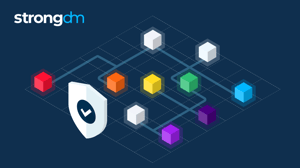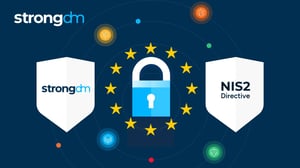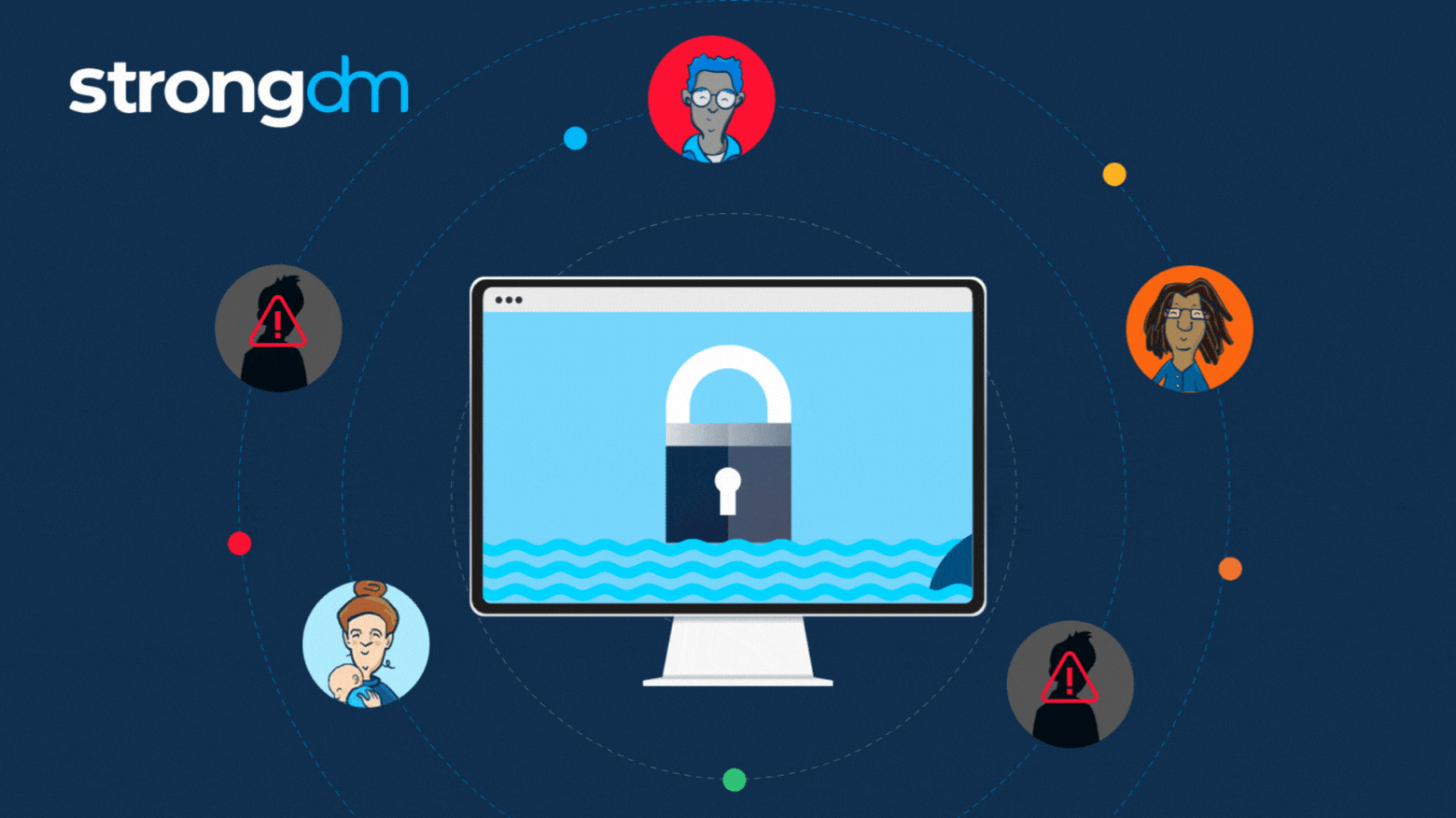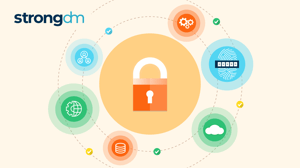
- Role-based, attribute-based, & just-in-time access to infrastructure
- Connect any person or service to any infrastructure, anywhere
- Logging like you've never seen
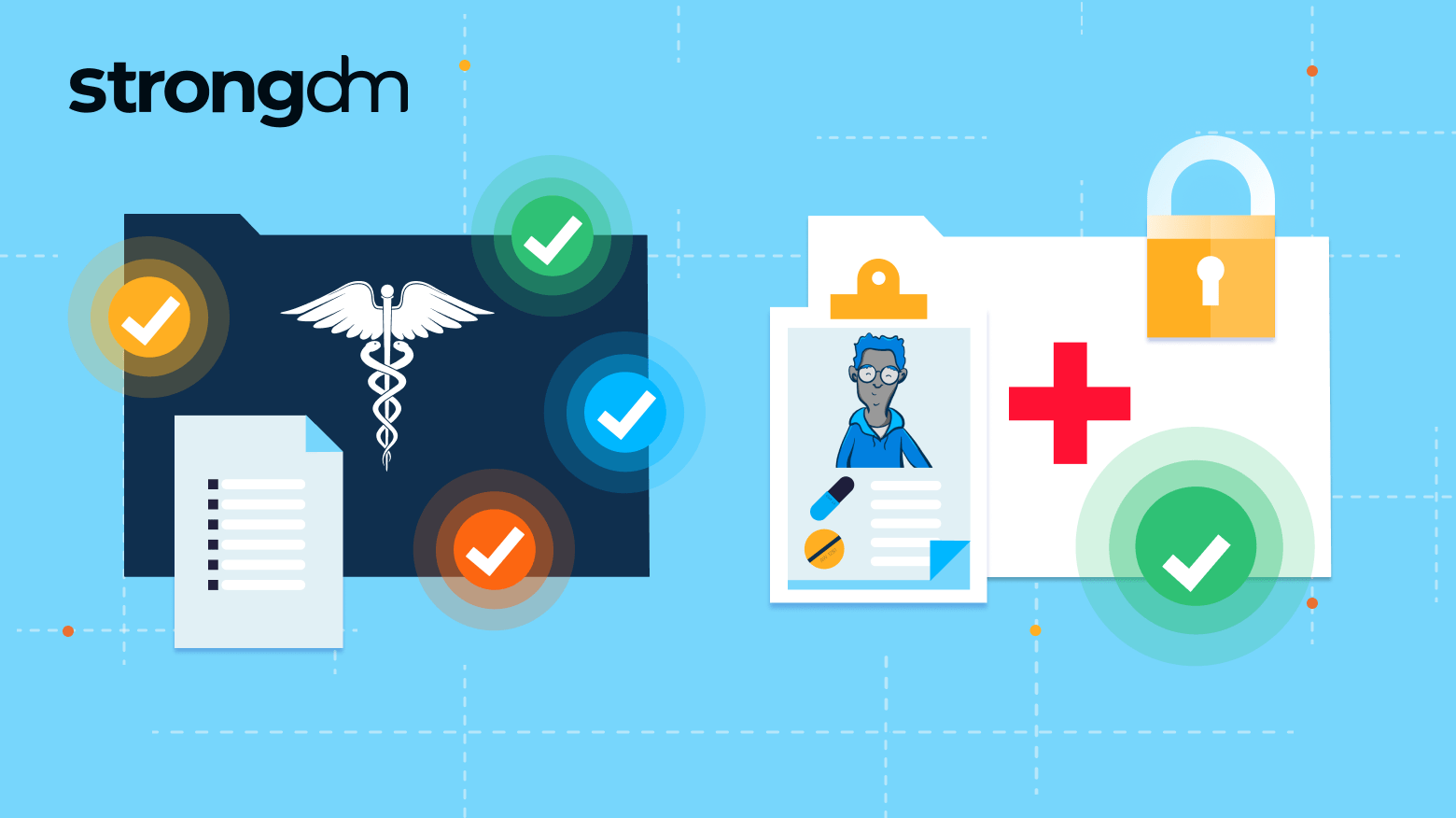
Healthcare data security protects sensitive patient information and related data from unauthorized access, use, or disclosure. The effective implementation of healthcare data security requires implementing cybersecurity measures to ensure healthcare data confidentiality, integrity, and availability. It must also include compliance with relevant regulations such as the Health Insurance Portability and Accountability Act (HIPAA).
Why is Healthcare Data Security So Important?
As a result of healthcare technology innovation, organizations adopt more applications and resources and store more patient information. As a result, these applications share individuals’ healthcare data, exposing records to a higher risk of unauthorized access and necessitating a more comprehensive approach to safeguarding this data. Patient records contain a wealth of personal data, including medical history, diagnoses, and treatment plans. If this data falls into the wrong hands, it can lead to identity theft, insurance fraud, and even compromised patient care.
Moreover, healthcare organizations are prime targets for cybercriminals. With the increasing use of electronic health records (EHRs) and interconnected systems, the risk of data breaches has escalated significantly. Therefore, robust security measures must be in place to safeguard patient privacy and maintain trust in the healthcare system.
3 Common Healthcare Data Security Challenges
Your organization may face many healthcare data security challenges when trying to protect patient information. Three common challenges are:
- The complexity of the healthcare IT environment: Various interconnected systems, applications, and devices, along with outdated or vulnerable legacy systems, make consistent security across the entire network a daunting task.
- The constant evolution of cyber threats: With hackers constantly devising new methods to infiltrate systems and exploit vulnerabilities, your organization must stay ahead of threats by continuously updating security measures.
- The human factor: Even with strong security measures in place, employees may unintentionally expose sensitive information through negligent actions such as falling victim to phishing attacks, using weak passwords, improperly handling patient data, or not promoting cybersecurity awareness.
HIPAA and HITRUST: Why Compliance is So Critical for Healthcare Organizations
Another healthcare data security challenge comes from regulatory compliance. In the United States, healthcare organizations must adhere to HIPAA to ensure the privacy and security of patient information. HIPAA sets standards for data security in healthcare and the protection of electronic health information and requires organizations to implement safeguards to prevent unauthorized access.
The Health Information Trust Alliance (HITRUST) offers a comprehensive framework to help organizations manage information security risks. HITRUST provides a standardized approach to assessing, managing, and communicating healthcare data security and privacy compliance.
Compliance with HIPAA and HITRUST is critical to avoid costly penalties and reputational damage. By adhering to these regulations, your organization can demonstrate its commitment to protecting patient privacy and maintaining the integrity of healthcare data.
10 Healthcare Data Security Best Practices
Maintain comprehensive data security in healthcare by following these best practices:
1. Implement Role-Based Access Control (RBAC)
Ensure that access to sensitive healthcare data is strictly based on the principle of least privilege. RBAC ensures that employees only have access to the information necessary to perform their job functions and no more. By assigning specific roles and permissions, your organization can enhance data security in healthcare and minimize the risk of unauthorized access and data breaches.
💡Make it easy: StrongDM's RBAC capabilities manage and monitor user permissions effectively. By assigning users to roles, StrongDM helps ensure that individuals only have access to the appropriate systems and data.
2. Monitor and Audit Access Logs
Maintain comprehensive access logs and regularly review them. Regularly monitoring and auditing access logs allows organizations to detect any unusual or suspicious activities or unauthorized access. By reviewing access logs, you can quickly identify potential security breaches and take immediate action to mitigate any risks.
💡Make it easy: StrongDM provides real-time monitoring and logging of all database and server access, helping healthcare organizations meet HIPAA requirements for audit trails and access monitoring.
3. Encrypt Data In Transit and At Rest
Protect patient data from unauthorized access by using secure encryption algorithms. Encrypt data during transit between systems and when stored on servers or other devices. Even if a malicious actor intercepts encrypted data, it’s useless without the proper decryption keys. Data encryption provides another layer of defense against unauthorized access and misuse of sensitive patient information.
💡Make it easy: StrongDM automatically encrypts data in transit to ensure that all data moving between endpoints is secure. Additionally, StrongDM integrates with systems that encrypt data at rest for a comprehensive security approach.
4. Enforce Multi-Factor Authentication (MFA)
Add an extra layer of security by implementing MFA. MFA requires users to provide two or more verification methods for authentication and can include a combination of passwords, biometrics, or security tokens. Even if a password gets stolen, unauthorized users can’t access accounts, so sensitive information stays secure.
💡Make it easy: StrongDM supports MFA, adding another security layer before users can access sensitive healthcare systems and data. This is enforced when authenticating to StrongDM and can be enforced at the policy level for any session.
5. Regularly Update and Patch Systems
Keep all systems and software updated. Apply the latest security patches to protect against vulnerabilities that cybercriminals can exploit. Regular updates and patches help ensure that you promptly address known security flaws.
💡Make it easy: StrongDM helps enforce security policies that require regular updates and patches as part of access controls, ensuring that only updated and compliant devices can connect to sensitive data.
6. Educate and Train Staff
Human error is a common cause of data breaches in healthcare. Regularly train healthcare staff on data security best practices, such as the importance of protecting patient information, to reduce the risk of accidental data exposure.
💡Make it easy: Use StrongDMs policy enforcement to ensure that employees complete training as a prerequisite for access to certain systems, thereby reinforcing the importance of security training.
7. Develop a Comprehensive Incident Response Plan
Having a detailed incident response plan in place for responding to data breaches and security incidents is crucial to minimize the impact of a cybersecurity incident. The plan should outline the steps to take in the event of a breach, including communication protocols, containment measures, and recovery strategies.
💡Make it easy: StrongDM aids in incident response by providing immediate and detailed logs for forensic analysis, helping identify what was accessed and by whom.
8. Ensure Compliance with Regulations
Stay compliant with healthcare regulations such as HIPAA, HITRUST, General Data Protection Regulation (GDPR), and others relevant to your location and operations to maintain compliance and protect patient data. Regularly reviewing and updating security policies and procedures ensures ongoing compliance with industry standards.
💡Make it easy: Use StrongDM’s compliance reporting features to demonstrate compliance with healthcare security regulations during audits.
9. Vendor Risk Management
Healthcare organizations often rely on third-party vendors for various services. Assess and manage the security practices of these vendors to ensure that they meet the same standards and regulations as your organization. This includes conducting regular audits and security assessments.
💡Make it easy: Manage third-party access through StrongDM’s granular access controls, ensuring vendors only access data essential to their services.
10. Continuous Security Assessment
Regularly assess your security posture to identify vulnerabilities and improve security measures. Implementing a continuous security assessment program allows you to proactively identify and address any vulnerabilities or weaknesses in your security infrastructure, while regular penetration testing helps identify potential threats and adopt appropriate measures.
💡Make it easy: StrongDM’s reports library lets you monitor all user activity, gain insights into unused access, and continuously review access patterns so you can set up alerts and adapt security policies.
Healthcare Data Security Trends to Know in 2024
In addition to the many changes affecting data security in healthcare, there are several emerging trends shaping the industry, including:
Artificial Intelligence: AI-powered security solutions can provide advanced threat detection and respond in real-time, improving incident response and reducing the risk of data breaches.
Blockchain technology for data integrity: Blockchain technology offers a decentralized and tamper-proof way to store and verify healthcare data, ensuring its integrity and preventing unauthorized modifications.
Cloud security: As more healthcare organizations move their data storage and processing to the cloud, robust cloud security measures remain vital in protecting patient information.
Internet of Medical Things (IoMT) security: The increase in connected medical devices makes securing the IoMT increasingly important to prevent potential vulnerabilities and protect patient safety.
Leverage emerging healthcare technologies to stay abreast of these healthcare data security challenges and stay one step ahead in the battle against cyber threats.
StrongDM: The Solution to Healthcare Data Security Challenges
Healthcare data security must ensure patient privacy to maintain trust in the healthcare system. By implementing robust security measures, adhering to regulations such as HIPAA and HITRUST, and staying updated with emerging trends, your organization can protect sensitive patient information from unauthorized access and data breaches.
Need a comprehensive solution to healthcare data security challenges? StrongDM offers a powerful platform that enables controlled access to resources and ensures compliance with regulatory requirements. With StrongDM, you can ensure that only authorized individuals can access sensitive data, reducing the risk of data breaches. Don't compromise on healthcare data security. Learn more about controlling access to your resources with a demo of StrongDM today.
About the Author
Fazila Malik, Product Marketing Manager, an accomplished product marketing manager with over 5 years of experience in the technology industry. She is skilled at developing comprehensive product marketing plans that encompass messaging, positioning, and go-to-market strategies. Throughout her career, Fazila has worked with technology products including software applications and cloud-based solutions. She is constantly seeking to improve her skills and knowledge through ongoing training and professional development. She is a member of the Product Marketing Alliance and is an AWS Cloud Certified Practitioner. To contact Fazila, visit her on LinkedIn.

You May Also Like
